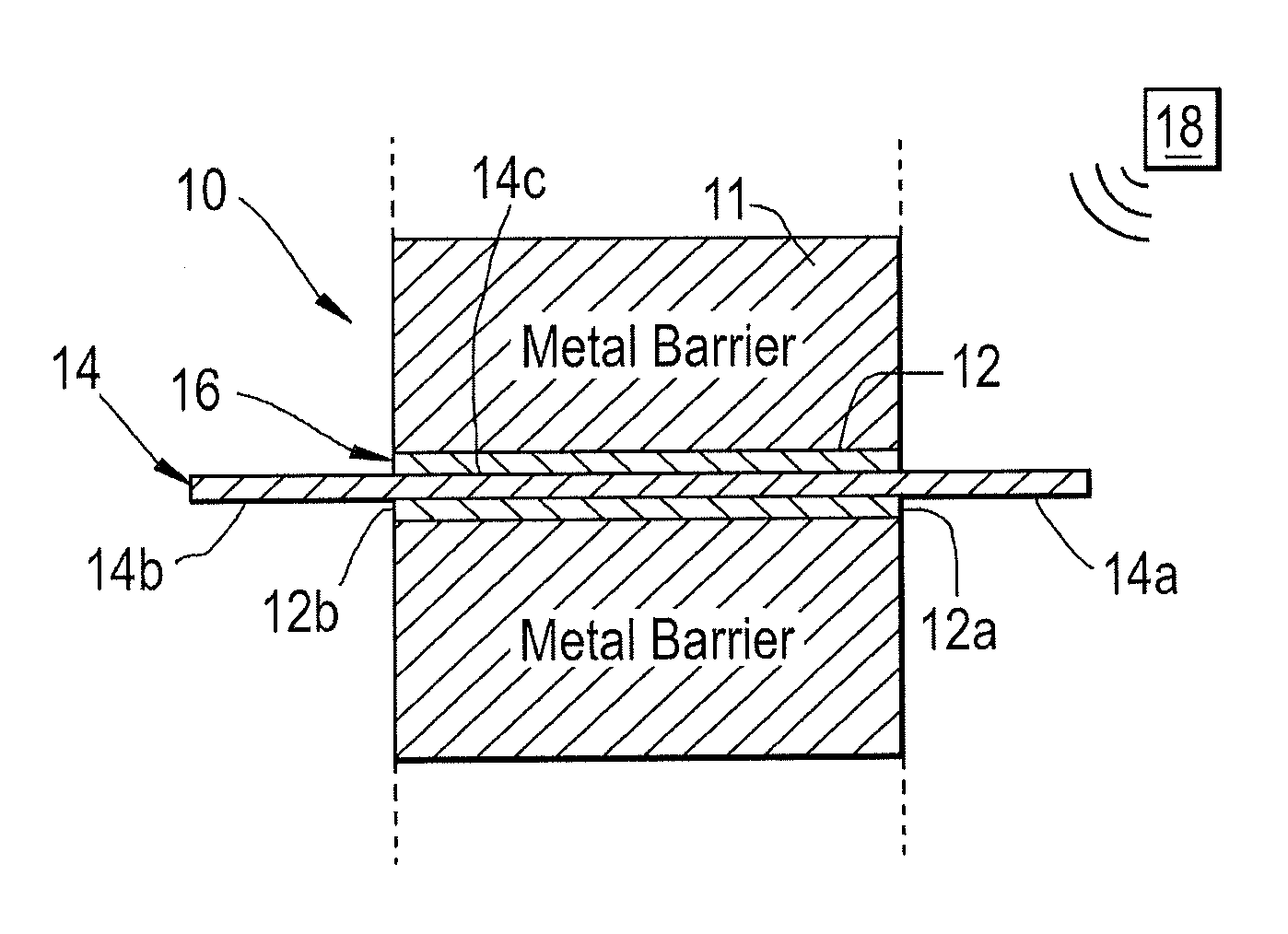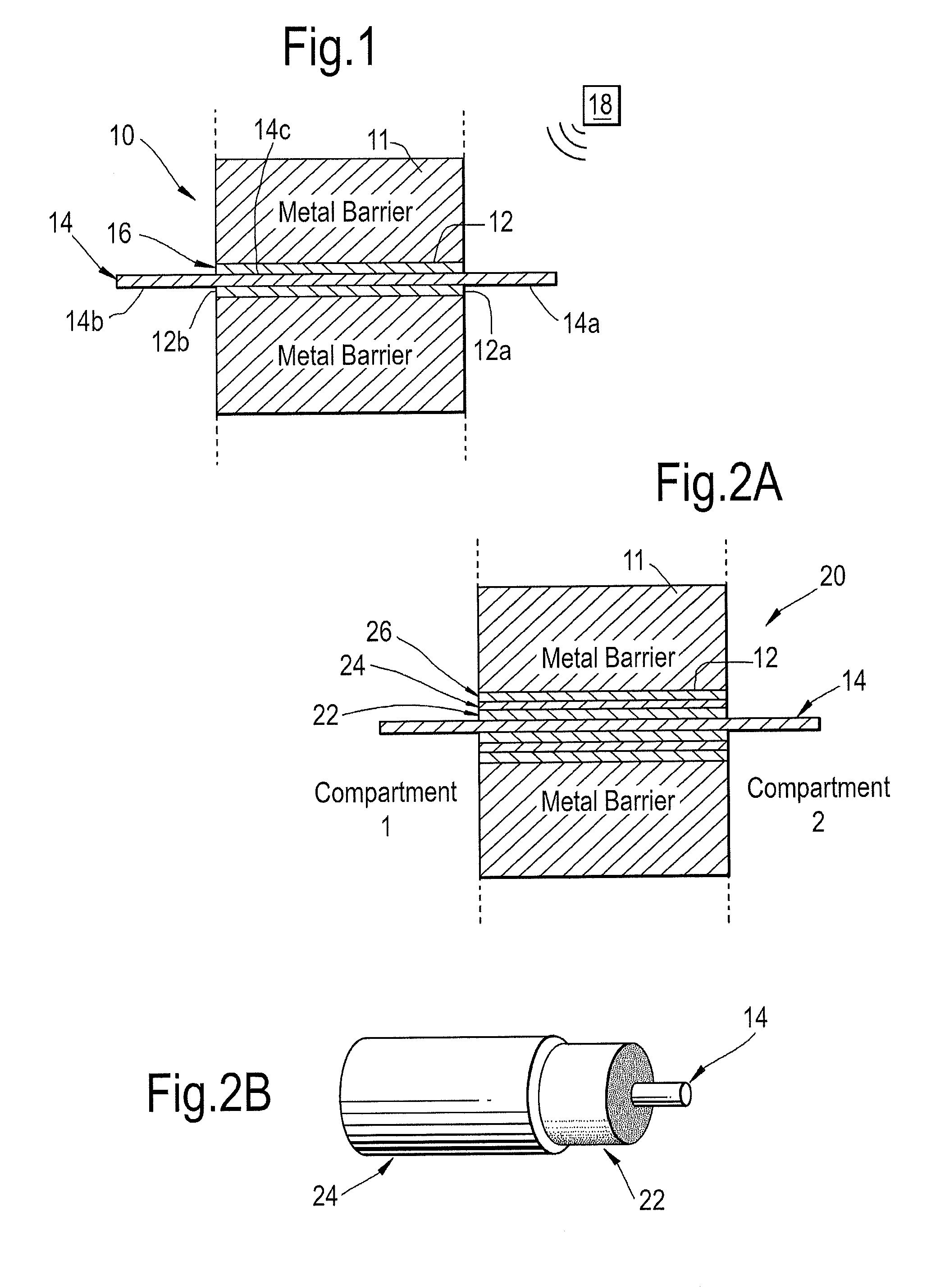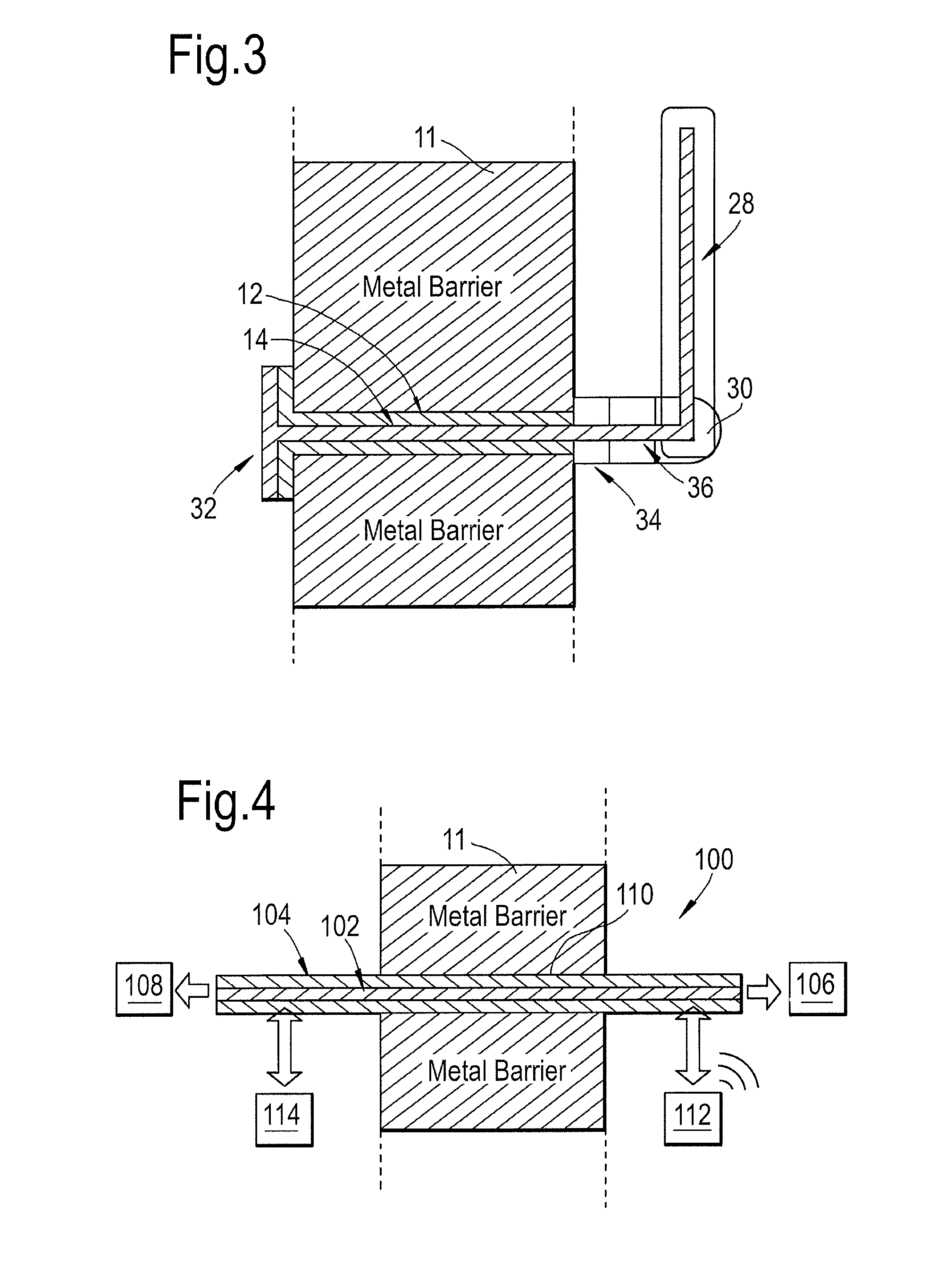Wireless signal propagation apparatus
a wireless signal and apparatus technology, applied in the direction of substantially flat resonant elements, elongated active elements, resonant antennas, etc., can solve the problems of inability to communicate physically, physical inability, and difficulty in communicating directly through metal barriers, so as to achieve significant cost and time savings
- Summary
- Abstract
- Description
- Claims
- Application Information
AI Technical Summary
Benefits of technology
Problems solved by technology
Method used
Image
Examples
Embodiment Construction
[0043]There exist numerous examples of compartments or enclosures having walls or casing which are substantially impenetrable to, or else provide a significant barrier to, the passage of conventional wireless communications signals. Some examples of such scenarios include aeronautical or automotive engine or propulsion compartments, such as gearboxes, thrusters (e.g. azimuth thrusters), fuel tanks or the like, but may also include other storage tanks, piping or enclosures for machinery or people. For example any road, rail or aerospace or marine transportation typically involves metal enclosures such as vessel compartments (e.g. spaced by bulkheads), goods containers or the like. Further examples may include pipes, such as oil and gas pipelines; industrial pumping equipment; clean rooms; security enclosures; nuclear containment vessels, amongst others.
[0044]The invention provides apparatus for bridging the communications signals between the interior and exterior of any such enclosur...
PUM
 Login to View More
Login to View More Abstract
Description
Claims
Application Information
 Login to View More
Login to View More - R&D
- Intellectual Property
- Life Sciences
- Materials
- Tech Scout
- Unparalleled Data Quality
- Higher Quality Content
- 60% Fewer Hallucinations
Browse by: Latest US Patents, China's latest patents, Technical Efficacy Thesaurus, Application Domain, Technology Topic, Popular Technical Reports.
© 2025 PatSnap. All rights reserved.Legal|Privacy policy|Modern Slavery Act Transparency Statement|Sitemap|About US| Contact US: help@patsnap.com



